ROMEO & JULIET “COME TO” BROOKLYN (1866)
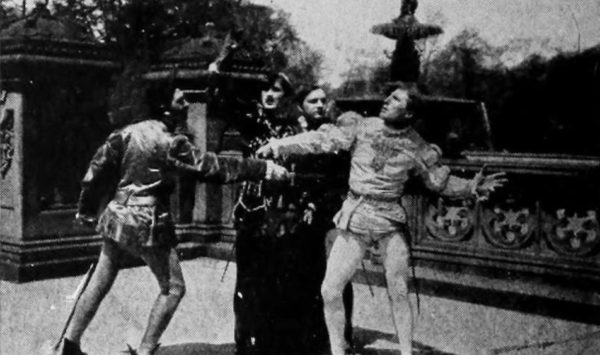
******************************************************************************************************************************** Brownstone Detectives investigates the history of our clients’ homes. The story you are about to read was composed from research conducted in the course of one of those investigations. Do you know the history of YOUR house? ******************************************************************************************************************************** The City of Brooklyn’s street grid system was still in its infancy in 1860, some 25 years after it had originally been laid out in Brooklyn maps in 1835. As builders began to buy up land, and as city elders watched the progress of speculative construction move continuously eastwards, it became apparent that some adjustments to the street grid were going to be necessary. SHAKESPEARE TO THE RESCUE Throughout the early 1860s, various New York State legislators from Kings County – likely in consultation with builders, land owners, and lawyers – began to plan these adjustments. These adjustments would come into being in two ways: 1) as extensions of certain streets through land that had originally been planned for building purposes, as well as 2) the closures of certain other portions of streets that had made other parcels of land unusable for building purposes. Thus, a legislative amendment to the Commissioners’ Map of the City of Brooklyn was in the works, and Brooklyn senators, having consulted professionals on the proposed changes, got to work on the wording to make the needed adjustments. In the end, six adjustments would be proposed – one of which was the creation of the very Shakespearean street moniker, Verona Place. “WHAT’S IN A NAME?” Considering the […]
SUNSETTING ON A BED-STUY BOULEVARD (1909)
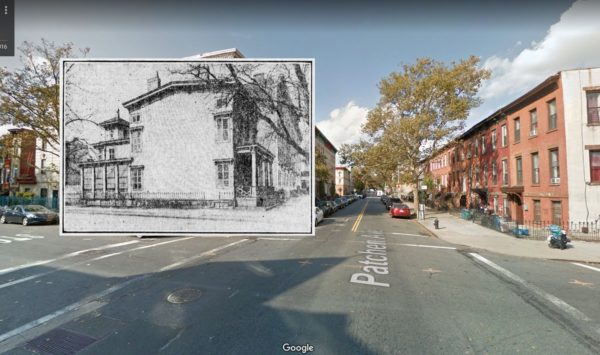
******************************************************************************************************************************** Brownstone Detectives investigates the history of our clients’ homes. The story you are about to read was composed from research conducted in the course of one of those investigations. Do you know the history of YOUR house? ********************************************************************************************************************************In 1909, a landmark was about to be destroyed. It was quite common, though, at the time for owners to tear down the antiquated wood-frame mansions that dotted Brooklyn’s landscape. Since the new brownstone houses had become all the rage in the 1880s, these tinder “firetraps” had become redundant, difficult to sell, and simply unstylish to live in. By the late 19th century, they were being sold, in many cases, for the value of their land as building lots. And with the demise of these historical artifacts, went some truly beautiful examples of mid-19th century architecture, few of which remain with us to this day. THE DE MILLE HOUSE The De Mille house was built around the middle of the 19th century for the family of that name, “and it has been a landmark in that region since the days when it was surrounded by open fields.” Yes, even Bedford-Stuyvesant – today chockablock with brownstone and masonry homes – was once – even before the advent of wood-frame homes – forested land alongside open virgin fields. As a matter of fact, the corner of Quincy and Patchen, in the 1850s, was little more than hills, dales, dirt lanes, and the vague promise of a future suburban city. “Broadway, which is nearby, was […]
FIRE, FUN & FIASCOES ON THE 4th (1887)
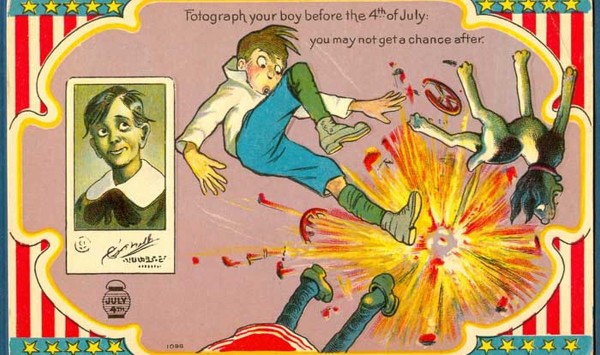
******************************************************************************************************************************** Brownstone Detectives investigates the history of our clients’ homes. The story you are about to read was composed from research conducted in the course of one of those investigations. Do you know the history of YOUR house? ******************************************************************************************************************************** A lot of accidents happen on the 4th of July. While it has been a day of celebration for Americans since its inception, certain citizens have tended to go a bit too far with their fireworks and other dangerous weapons. Back in 1887, a few days after Independence Day, a listing of the damages occurring and casualties effected on that date appeared in the Brooklyn Daily Eagle – once the authorities had had the time to assess the collective destruction. “Pistols and pyrotechnics of every kind were used with absolute impunity by even mere children,” the paper noted, “and the wonder is that more accidents did no occur.” The following list reflects a number of police blotters and lays out the accidents occurring primarily in the Eastern District (Williamsburg and Bushwick areas, and parts of Bed-Stuy). It is partial, but it will 1) boggle your mind, and 2) make you laugh. FIRE CRACKERS AS ASSAULT WEAPONS 8:30 – A boy whose identity could not be discovered threw a firecracker at the peanut stand outside the frame building at 21 Grand street and set it on fire. The building, which was owned and occupied by Sauer Brothers as a saloon, was damaged to the amount of $500 before the flames were extinguished. […]
THE COP, THE VIRUS, & THE PARROT (1930)
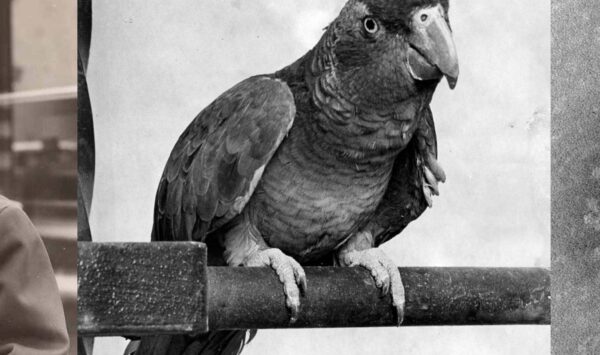
******************************************************************************************************************************** Brownstone Detectives investigates the history of our clients’ homes. The story you are about to read was composed from research conducted in the course of one of those investigations. Do you know the history of YOUR house? ******************************************************************************************************************************** One night in January of 1930, a recent NYPD Academy graduate, Officer Charles Suss, was patrolling his beat at Macon Street and Howard Avenue. “Six nights he has tramped his frosty beat in the cold hours between midnight and 8 a.m.,” the New York Times reported. “Six nights he has tramped his beat aimlessly, hoping for something to happen.” But then, as now, rookie cops got the worst time shifts. Also, Macon and Howard, according to the Times, was “a far removed section of Brooklyn” that was “apparently devoid of crimes. “There was only silence and a little rain.” But at 5 o’clock on that frosty January morning “Suss and his still brightly varnished stick swung down Howard Avenue. “The patrolman, as usual, was brooding on crime,” the Times claimed. “He had just decided that the girl he was rescuing would have light hair and blue eyes. In another moment they would be in the Marriage License Bureau at the Municipal Building.” But then came a “cry from the middle of Saratoga Park.” “Hello, Jake,” it cried. “Help! Help!” “Suss and his club streamed into the thin bushes of the park, guided by the racket and the calls for help. Suss remembered his undergraduate days and what he had been told […]
A BUILDER, A BRIBE, & A BLOCKED VIEW (1904)
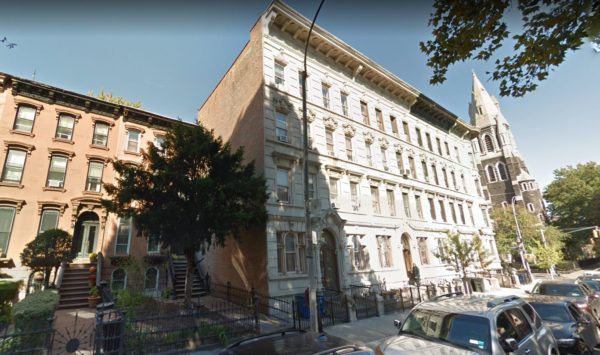
******************************************************************************************************************************** Brownstone Detectives investigates the history of our clients’ homes. The story you are about to read was composed from research conducted in the course of one of those investigations. Do you know the history of YOUR house? ******************************************************************************************************************************** After builder Chauncey G. Cozine had filed his building plans for a set of luxury apartment buildings to be constructed at the northwest corner of Throop Avenue and MacDonough Street, the neighbors were horrified to learn of the enormity of the structures. As a matter of fact, they were so taken aback at the prospect, that when they met to determine how to address the egregious assault on their homes, they dug deeply into their pockets – each of them as deep as he felt it was worth – to come up with a sum that, combined, would hopefully encourage Cozine to consider altering his designs. When Cozine received the offer, though, the 30-year-old builder answered the monetary plea with a curt one-word response. “No.” BEFORE THE FOUNDATIONS WERE EXCAVATED Before Cozine came along in 1904, the noble brownstone structures with their stately front gardens which sat along the north side of MacDonough Street, commanded unobstructed views up and down the street. From the front stoop of any of these structures, which belonged, incidentally, to some of the wealthiest residents of Stuyvesant Heights, could be seen rows of beautiful brownstone houses and the majestic churches of two different denominations. At the Tompkins end of the block, sat the Tomkins Avenue Congregational […]
TO CATCH A MACDOUGAL STREET THIEF (1910)
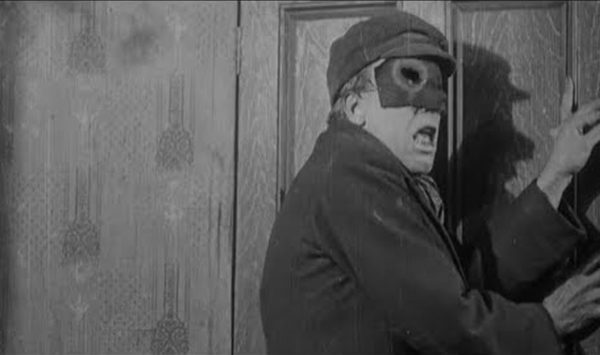
******************************************************************************************************************************** Brownstone Detectives investigates the history of our clients’ homes. The story you are about to read was composed from research conducted in the course of one of those investigations. ******************************************************************************************************************************** When investigating the history of a house, we sometimes come across a jewel that details an event which took place within the structure. The following narrative from 1910 tells a story involving the homeowner of No. 274 MacDougal Street, a rowhouse in the Ocean Hill section of Bedford-Stuyvesant, who happened upon a would-be burglar entering his home through an open window late one night. The homeowner, Charles Ortman, an engineer, had recently moved to the newly-built structure with his small family. Ortman showed a presence of mind not typical of someone faced with an intruder attempting to gain access to his home. Using old newspaper stories, city insurance maps, and census records, we reconstruct the case. Brooklyn Daily Eagle, 5 November 1910 – “Charles Ortman, an engineer last night shot a burglar who was in the act of breaking into his home at 274 McDougal street. The shooting was witnessed by his 12-year-old son, Charles, and by his wife, who had followed him out to the dining room, where the thief’s face had appeared pressed close to the window pane. “Whether the would be intruder was slightly or fatally wounded the police do not know. He had disappeared when a policeman of the Ralph avenue station arrived, in response to a summons from the Ortman home. But there was […]
THE EFFECTS OF WAR ON BED-STUY (1918)
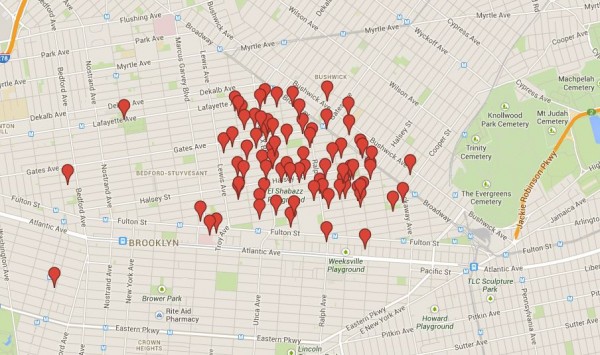
******************************************************************************************************************************** Brownstone Detectives investigates the history of our clients’ homes. The story you are about to read was composed from research conducted in the course of one of those investigations. Do you know the history of YOUR house? ******************************************************************************************************************************** During the brief period that the U.S. was engaged in WWI, the eastern section of Brooklyn’s Stuyvesant Heights section was decimated by its contribution of men to the war effort. Then, it was decimated a second time by the generous contribution it made of many of these mens’ lives. According to the honor rolls of the “Victory & Peace” memorial in Saratoga Park, approximately 105 men (and one woman) from the neighborhood made the ultimate sacrifice. There was a death on nearly every block of the district – often more. The MAP above shows with red pins the locations where some of these men lived – many of them who had left new wives, parents, and families waiting for them back home. The servicemembers, represented on this map by these red dots, never made it back home, though. Most were buried in American Cemeteries in France; some were re-buried here in the U.S. After the war, the Gold Star Mothers pilgrimages began to take place, as thousands of the mothers of these servicemembers made the government-sponsored trips to France in order to visit the last resting places of their children. Today, the specific memories of these citizens who grew up together, went to school together, played, learned, and competed together here […]
FINDING YOUR BROWNSTONE – IN 1924
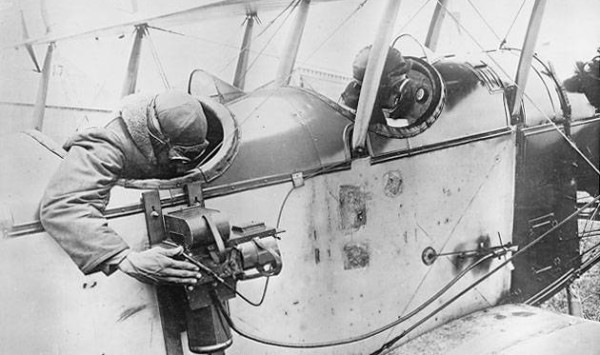
******************************************************************************************************************************** Brownstone Detectives investigates the history of our clients’ homes. The story you are about to read was composed from research conducted in the course of one of those investigations. Do you know the history of YOUR house? ******************************************************************************************************************************** Have you ever wondered what your neighborhood looked like in 1924? Or 1951? Or 1996? Aerial photography exists of all of New York City’s neighborhoods and is available to view (and zoom in on!) for free just by visiting NYC Map (a service of the City of New York). Simply type your address in the box at the top of the page and click “Search.” Then – in the upper right hand corner of the map – click on “Map Type,” and select the year you would like to view. Here is a view of Stuyvesant East in Bedford-Stuyvesant (showing Saratoga Park) in 1924. As you might have guessed, you won’t be able to see the expressions on peoples’ faces with this imagery, but it will give you a good indication of what your neighborhood looked like in any of these years. For comparison’s sake, here is a view of the same section of Bedford-Stuyvesant (as above) – but for 1996. What differences do you note between the two pictures? Comparing the two maps, you can see some obvious changes. Other than the fact that the second image is in color and was apparently taken in the winter time, if you look closely, you can see how whole swaths of brownstones […]
SO, A TROLLEY WALKS INTO A BODEGA…. (1931)
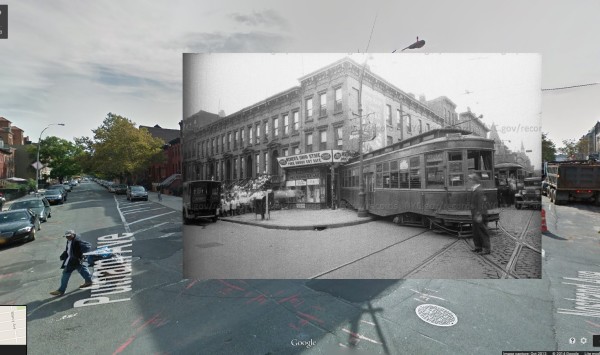
******************************************************************************************************************************** Brownstone Detectives investigates the history of our clients’ homes. The story you are about to read was composed from research conducted in the course of one of those investigations. Do you know the history of YOUR house? ******************************************************************************************************************************** We’ve all heard the famous opening line to the joke. But this one really happened. Rather, the streetcar “rolled” into the business, but only after jumping its tracks. This incident took place on 7 July 1931, at the corner of Putnam and Nostrand avenues in the Bedford-Stuyvesant section of Brooklyn. Fortunately, no one was killed, although six people were injured. Unfortunately, though, streetcar accidents had become a common occurrence in the days after streetcars stopped using horses for propulsion. And this was all too evident in Brooklyn, for within the past week, alone, four other streetcar crashes had occurred, injuring a total of 31 people. As a matter of fact, this was the final straw for Brooklyn’s D.A., who ordered an investigation into the “six B.M.T. trolley car accidents in the past few weeks.” His intention was “to determine whether or not there is cause for criminal proceedings.” It would have been understandable among many Brooklynites of the period if there were talk about returning the streetcar to the horse. For another story we’ve written about streetcars jumping their tracks, click HERE. Follow @BrownstoneDetec Share ———————————————————————————————————————– The Brownstone Detectives Brownstone Detectives is an historic property research agency. Our mission is to document and save the histories of our clients’ homes. From […]
SPRING BRINGS THE BEAN SHOOTERS (1863)
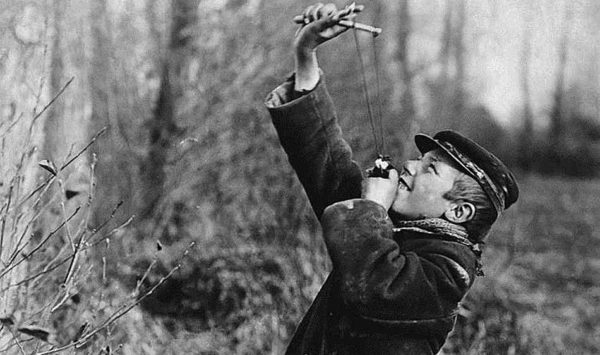
******************************************************************************************************************************** Brownstone Detectives investigates the history of our clients’ homes. The story you are about to read was composed from research conducted in the course of one of those investigations. Do you know the history of YOUR house? ******************************************************************************************************************************** There were a LOT of bad little boys in Brooklyn in the 19th century. Sifting through old issues of the Brooklyn Daily Eagle, the Standard Union, and other Brooklyn papers, I come across evidence of this on a daily basis. Of all the crimes that I see having been committed, one of the most common – and interesting – is the work of the “bean shooters.” When I was a kid I had a bean-shooter myself – and I did the same thing. There were a lot of broken window panes in my neighborhood – some I was found guilty of breaking – and most others of which I got away scot free of any blame whatsoever. (There was always the suspicion, though, that I was the culprit.) But I digress. Let’s rewind, though – further back to the mid- to late-1800s, and take a look at the work of my fierce little boy predecessors. BEAN-SHOOTING IN 19TH CENTURY BROOKLYN While sling shots (or often called “slung shots”) were a constant presence in the hands of gang members and criminals (they were outlawed by the New York State Legislature in 1849), it seems that the use of such a device by boys, with any degree of consistency, did not come until […]